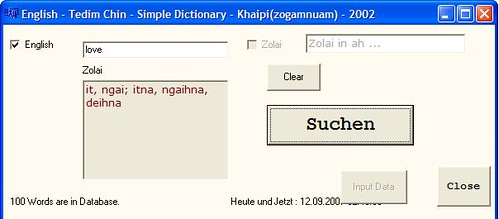Beta versions of apps provide users with early access to new features and updates before they are released to the general public. Participating in beta testing allows you to experience the latest innovations and provide valuable feedback to developers. This guide will explain how to use beta versions of apps, the benefits and risks, and best practices for beta testing.
Understanding Beta Versions

Before diving into the specifics of using beta versions of apps, it’s important to understand what they are and why they are offered.
- What Are Beta Versions?: Beta versions are pre-release versions of software that are made available to a select group of users for testing purposes. These versions are typically more stable than alpha versions but may still contain bugs and unfinished features. Developers release beta versions to gather feedback and identify issues that need to be addressed before the final release. Understanding beta versions helps you set realistic expectations about their stability and functionality.
- Why Participate in Beta Testing?: Participating in beta testing allows you to access new features early and contribute to the app’s development. Your feedback can help developers improve the app and fix bugs. Additionally, being a beta tester can be exciting as you get to experience cutting-edge technology before others. Participating in beta testing provides an opportunity to influence the development process and ensure that the final product meets user needs.
Joining a Beta Program

To use beta versions of apps, you need to join a beta program. Here’s how you can do that on different platforms.
- Joining Beta Programs on Android: Many Android apps offer beta programs through the Google Play Store. To join, search for the app in the Play Store, scroll down to find the “Join the beta” section, and tap “Join.” You may need to wait a few minutes for the beta version to become available. Once you are enrolled, you can update the app to the beta version from the Play Store. Joining beta programs on Android allows you to easily access and test new features.
- Joining Beta Programs on iOS: On iOS, beta programs are typically managed through Apple’s TestFlight app. Developers invite users to join their beta program via an email invitation or a public link. Once you receive the invitation, open it and follow the instructions to install TestFlight and the beta version of the app. Joining beta programs on iOS requires using TestFlight, which simplifies the process of managing beta apps.
Installing and Using Beta Versions

After joining a beta program, you need to install and use the beta versions of the apps.
- Installing Beta Versions on Android: Once you have joined a beta program on the Google Play Store, open the Play Store and navigate to the app. Tap “Update” to install the beta version. If the update is not immediately available, wait a few minutes and try again. After installation, open the app and start using it as you normally would. Installing beta versions on Android involves updating the app through the Play Store.
- Installing Beta Versions on iOS: After accepting an invitation in TestFlight, the beta version of the app will be available for installation. Open TestFlight, find the app, and tap “Install.” Once installed, you can open the app and use it as usual. TestFlight will notify you of any new beta updates, which you can install directly from the app. Installing beta versions on iOS requires using TestFlight to manage and update the beta apps.
Providing Feedback
Providing feedback is a crucial part of using beta versions of apps. Your input helps developers identify and fix issues.
- Submitting Feedback on Android: Most beta programs have a designated channel for submitting feedback, such as a Google Group or a feedback form within the app. Look for a “Send Feedback” option in the app menu or visit the beta program’s community page. When submitting feedback, be detailed and specific about the issues you encounter. Include information about your device, operating system, and steps to reproduce the problem. Submitting feedback on Android helps developers understand and address user issues effectively.
- Submitting Feedback on iOS: In TestFlight, you can submit feedback directly from the app. Open TestFlight, select the app, and tap “Send Beta Feedback.” You can include screenshots and detailed descriptions of any issues you encounter. Additionally, some developers provide email addresses or forums for feedback. Providing detailed and constructive feedback helps developers improve the app and ensures that your experience is considered in future updates. Submitting feedback on iOS through TestFlight streamlines the process and helps developers receive comprehensive reports.
Benefits of Using Beta Versions
Using beta versions of apps comes with several benefits that make the experience worthwhile.
- Early Access to New Features: One of the most significant benefits of using beta versions is early access to new features and improvements. This allows you to stay ahead of the curve and enjoy the latest innovations before they are released to the general public. Early access enhances your user experience and keeps you informed about upcoming changes.
- Influence App Development: As a beta tester, your feedback directly impacts the development of the app. Developers rely on user input to fix bugs, improve features, and ensure the app meets user needs. By participating in beta testing, you can help shape the final product and contribute to its success. Influencing app development gives you a sense of involvement and contribution to the tech community.
Risks and Considerations
While there are many benefits to using beta versions of apps, there are also some risks and considerations to keep in mind.
- Potential Bugs and Instability: Beta versions are not final products and may contain bugs or performance issues. These problems can affect your overall experience and, in some cases, cause data loss or crashes. It’s important to back up your data and be prepared for possible issues when using beta versions. Understanding the potential risks helps you make informed decisions about participating in beta programs.
- Compatibility Issues: Beta versions may not be fully compatible with all devices or operating systems. This can lead to functionality problems or conflicts with other apps. Before installing a beta version, check the compatibility requirements and ensure your device meets them. Being aware of compatibility issues helps you avoid problems and ensures a smoother beta testing experience.
Best Practices for Beta Testing
To make the most of your experience with beta versions of apps, follow these best practices.
- Stay Informed: Keep up with updates and announcements from the developers. Join beta program forums or communities to stay informed about known issues, upcoming features, and best practices for testing. Staying informed helps you navigate the beta testing process more effectively and provides valuable insights.
- Regularly Update the App: Beta versions are frequently updated to fix bugs and add new features. Regularly check for updates and install them to ensure you are testing the latest version. Keeping the app updated helps you provide relevant feedback and ensures a better testing experience.
Conclusion
Using beta versions of apps offers an exciting opportunity to experience new features early and contribute to the development process. By understanding beta versions, joining beta programs, installing and using beta versions, providing feedback, considering the benefits and risks, and following best practices, you can make the most of your beta testing experience. Engaging in beta testing allows you to stay ahead of the curve, influence app development, and enjoy the latest innovations in software. Your participation and feedback are invaluable to developers, helping them create better, more reliable apps for everyone.
